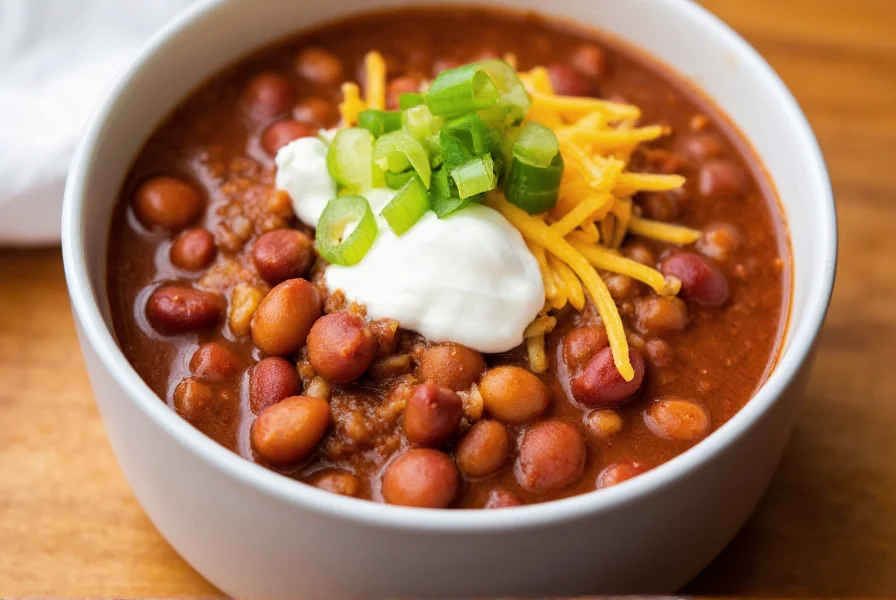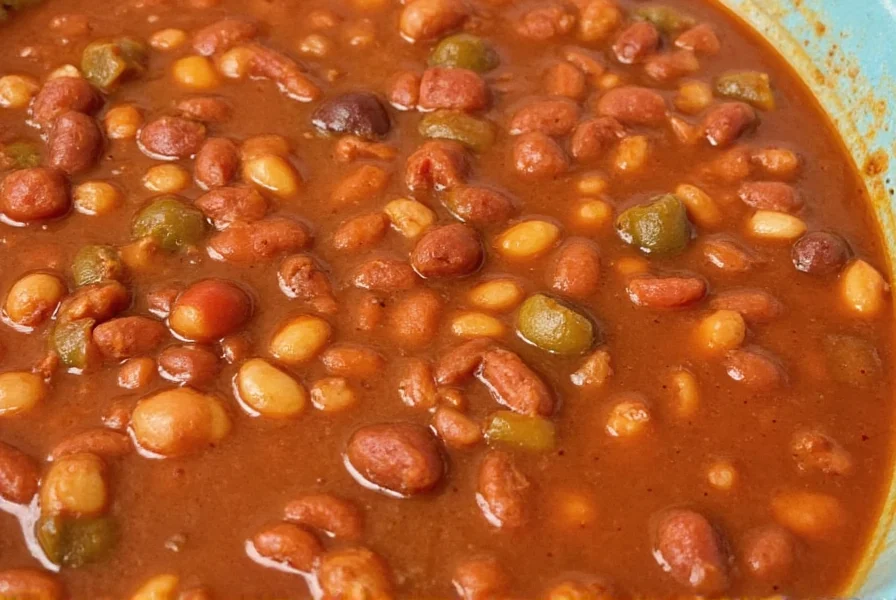Creating exceptional pinto bean chili starts with understanding the foundation of this beloved Southwestern dish. Unlike traditional chili con carne that relies heavily on kidney beans, pinto bean chili showcases the earthy flavor and creamy texture of pinto beans, which hold their shape well during cooking while absorbing surrounding flavors. This version delivers superior nutritional benefits with higher fiber content and a more balanced amino acid profile.
Why Pinto Beans Elevate Your Chili
Pinto beans (Phaseolus vulgaris) contain 15.4g of protein per cooked cup and provide significant amounts of iron, magnesium, and B vitamins. Their starch composition creates a creamier texture than kidney beans, resulting in a naturally thicker chili without needing excessive thickeners. When properly prepared, pinto beans develop a distinctive speckled appearance that gives them their Spanish name "painted".

Essential Ingredients for Authentic Flavor
The magic of a best pinto bean chili recipe lies in ingredient quality and proper layering of flavors. You'll need:
| Category | Ingredients | Key Purpose |
|---|---|---|
| Beans & Liquid | 2 lbs dried pinto beans (or 4 cans) | Base protein and texture |
| 6 cups broth (vegetable or chicken) | Flavor foundation | |
| Aromatics | 1 large onion, 4 garlic cloves | Flavor base |
| 1 bell pepper, 2 jalapeños | Complexity and heat | |
| Acid & Sweet | 28 oz crushed tomatoes | Brightness and body |
| 2 tbsp tomato paste | Depth of flavor |
Step-by-Step Cooking Process
Follow this easy pinto bean chili recipe for perfect results every time:
- Bean preparation: If using dried beans, soak overnight in water with 1 tsp baking soda (reduces cooking time and improves digestibility). Drain and rinse before use.
- Sauté aromatics: Cook onions and peppers in olive oil over medium heat until translucent (8-10 minutes). Add garlic during the last 2 minutes.
- Build flavor base: Stir in tomato paste and cook for 3 minutes until it darkens slightly. Add spices and cook 1 minute more.
- Combine ingredients: Add beans, tomatoes, broth, and spices. Bring to gentle boil.
- Simmer: Reduce heat to low and cook uncovered for 2-3 hours for dried beans (45 minutes for canned), stirring occasionally.
- Final adjustment: Remove bay leaves. Adjust salt and acidity with lime juice if needed.
Perfecting Your Pinto Bean Chili Seasoning
The pinto bean chili seasoning blend makes or breaks your dish. Combine these dry spices:
- 2 tbsp chili powder (ancho preferred)
- 1 tbsp cumin
- 1 tsp smoked paprika
- 1 tsp oregano
- 1/2 tsp cayenne (adjust to heat preference)
- 1 tsp garlic powder
- 1 tsp onion powder
- 2 bay leaves
For authentic flavor development, toast whole spices (cumin seeds, coriander) in a dry pan before grinding. Add dried spices during the sauté step to bloom their flavors in oil before liquid addition.
Variations for Every Dietary Need
Adapt this vegetarian pinto bean chili to suit any preference:
- Slow cooker method: After sautéing, transfer to crockpot and cook on low 6-8 hours. Ideal for slow cooker pinto bean chili with minimal effort.
- Meat addition: Brown 1 lb ground beef or turkey with aromatics for heartier pinto bean chili with ground beef.
- Vegan version: Use vegetable broth and omit dairy toppings.
- Tex-Mex twist: Add 1 cup corn and 1 diced poblano pepper.
- White bean alternative: Substitute half the pintos with navy beans for different texture.

Avoiding Common Pinto Bean Chili Mistakes
Prevent these frequent errors when making your healthy pinto bean chili:
- Underseasoning: Chili needs more salt than you might expect. Season in layers throughout cooking.
- Over-thickening: Resist adding flour or cornstarch. Proper simmering naturally thickens through bean starch release.
- Incorrect bean preparation: Never add salt during bean soaking/cooking as it prevents softening.
- Rushing flavor development: Allow minimum 30 minutes simmering after adding spices for full flavor integration.
- Skipping acid balance: Finish with 1-2 tbsp lime juice or apple cider vinegar to brighten flavors.
Serving and Storage Guidelines
For optimal pinto bean chili cooking time results, let the chili rest 15-20 minutes before serving. This allows flavors to meld and texture to stabilize. Store leftovers in airtight containers:
- Refrigeration: Keeps 5 days
- Freezing: Maintains quality 6 months (thaw overnight in refrigerator)
- Reheating: Warm gently on stove with splash of broth to restore consistency
Ideal Toppings and Pairings
Elevate your pinto bean chili recipe with these complementary additions:
- Creamy elements: Sour cream, avocado, or Greek yogurt
- Cheese options: Sharp cheddar, cotija, or queso fresco
- Fresh accents: Diced red onion, cilantro, or lime wedges
- Crunchy toppings: Tortilla strips or crushed corn chips
- Perfect pairings: Cornbread, rice, or simple green salad
Frequently Asked Questions
Can I make pinto bean chili without meat and still get good flavor?
Absolutely. For exceptional flavor in vegetarian pinto bean chili, use smoked paprika, liquid smoke (sparingly), and roasted mushrooms. The natural starch from pinto beans creates a meaty texture, while proper layering of spices and slow simmering develops deep flavors without meat.
How do I prevent gas from eating pinto bean chili?
To minimize digestive discomfort, always soak dried pinto beans overnight with 1 tsp baking soda, then discard soaking water. Rinse thoroughly before cooking. Adding a strip of kombu seaweed during cooking helps break down complex sugars. Start with smaller portions if you're not accustomed to high-fiber foods.
What's the ideal cooking time for pinto bean chili in a slow cooker?
For slow cooker pinto bean chili, cook on low for 6-8 hours or high for 3-4 hours. If using dried beans, ensure they've been pre-soaked. Canned beans require only 2-3 hours on low. The chili is ready when beans are tender but not mushy and flavors have fully melded.
Can I freeze pinto bean chili successfully?
Yes, pinto bean chili freezes exceptionally well. Cool completely before transferring to airtight containers, leaving 1-inch headspace for expansion. Freeze for up to 6 months. Thaw overnight in the refrigerator before reheating gently on the stove with a splash of broth to restore consistency.
How can I thicken pinto bean chili without altering flavor?
The best way to thicken pinto bean chili naturally is to remove 1-2 cups of chili, mash the beans, then return to the pot. Alternatively, simmer uncovered for 20-30 minutes to reduce liquid. Avoid flour or cornstarch which can create a pasty texture and dull flavors.











 浙公网安备
33010002000092号
浙公网安备
33010002000092号 浙B2-20120091-4
浙B2-20120091-4